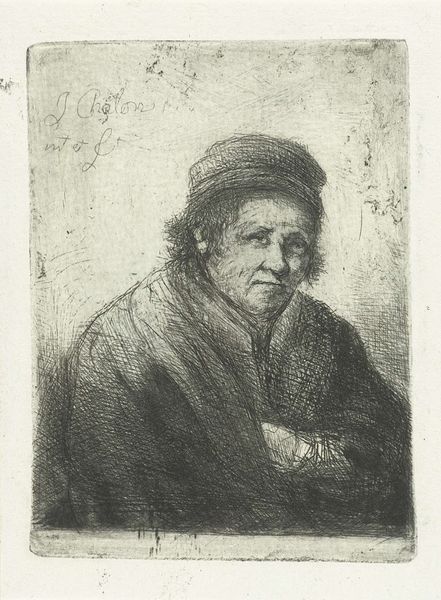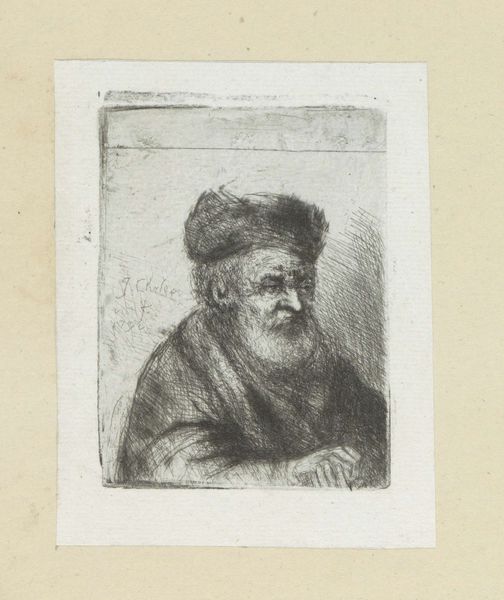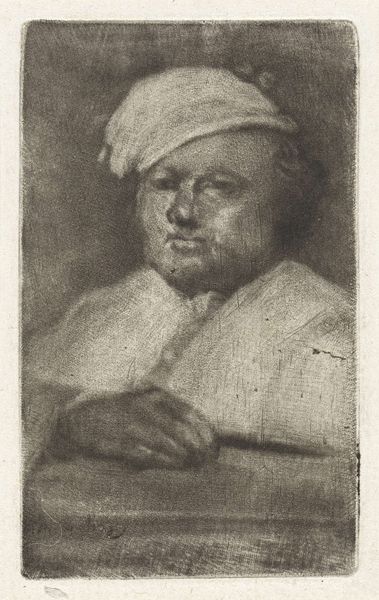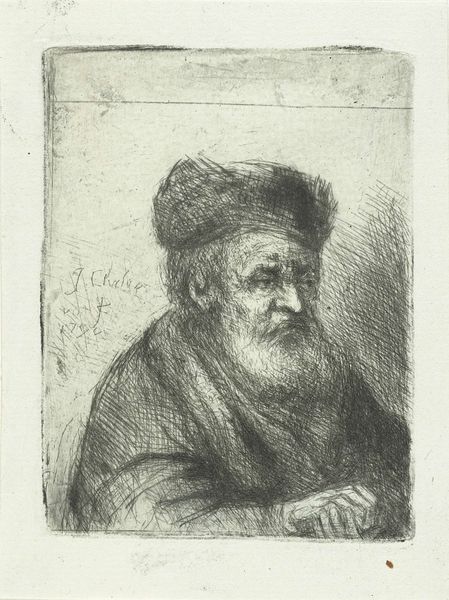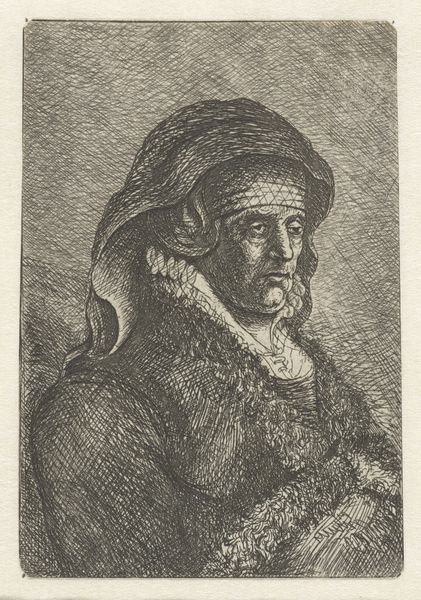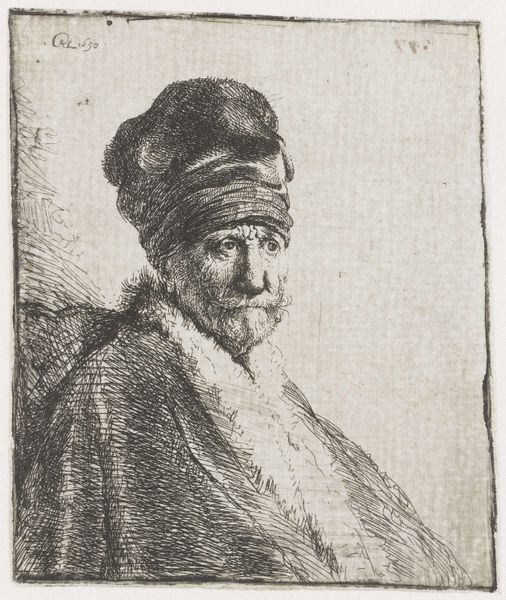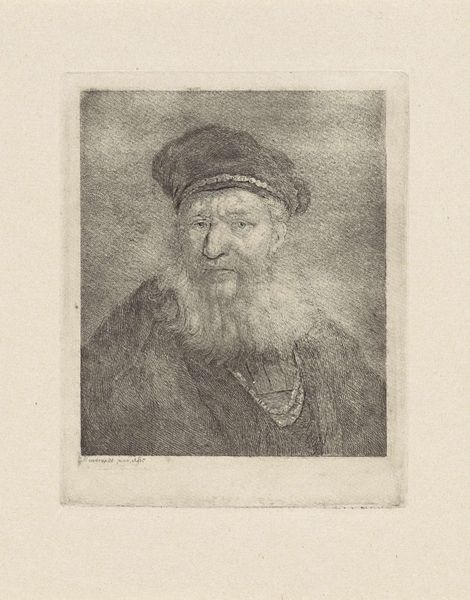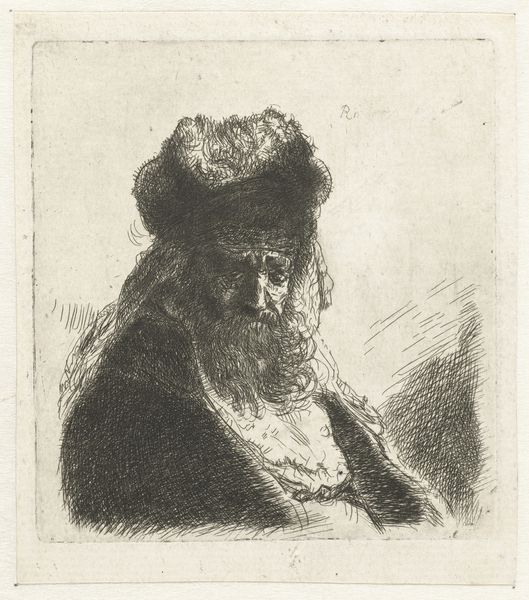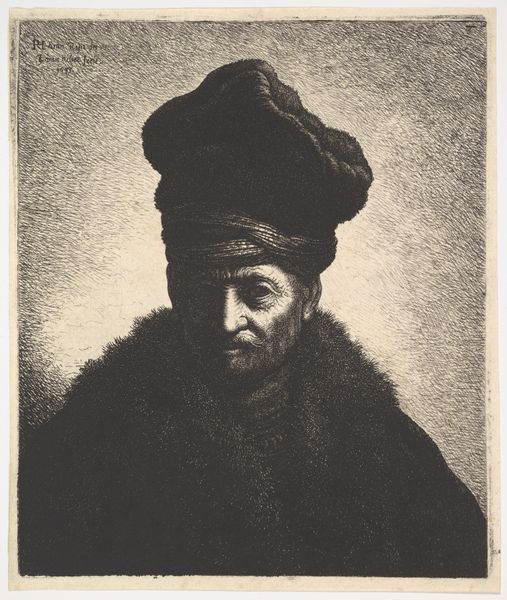
drawing, print, etching
#
portrait
#
pencil drawn
#
drawing
#
neoclacissism
#
light pencil work
#
shading to add clarity
# print
#
etching
#
pencil sketch
#
old engraving style
#
personal sketchbook
#
pencil drawing
#
pen-ink sketch
#
limited contrast and shading
#
pencil work
Dimensions: height 58 mm, width 47 mm
Copyright: Rijks Museum: Open Domain
Curator: This etching, dating back to 1784, is titled "Man met hoge muts wijzend op papier," or "Man with tall hat pointing to paper," by Jean-Pierre Norblin de la Gourdaine. Editor: It’s quite striking! He seems lost in thought, or perhaps he's making a critical decision, judging by that finger pointing at the document. There is a sense of weight to the image, of pondering and considering. Curator: I see a convergence of social roles here. You know, the act of pointing suggests authority, judgment even, yet the medium itself, the etching, brings a level of democratisation to image-making. Printmaking made images like these more accessible during that period. It takes it away from a simple portrayal of social status to making it an available commodity for wider circles. Editor: I agree. The crosshatching technique gives this a raw, almost unfinished quality that invites you closer to the process. It really highlights labor. There is so much detail! Think of the manual skill it would take to cut lines like that to the plate with burin. It brings the maker close to us. And he is clearly wearing his best furs...it gives this so much context about social layers and production. Curator: And look at the hat. It is massive, giving an eccentric, theatrical air to this man. One might say it symbolizes a certain level of ambition. He stands before us, not in serene neoclassical composure, but full of life! There’s an energy to him, like he could at any moment, jump from the paper. I can almost hear his thoughts about paper and pen. Editor: True! And given the French Revolution was just around the corner, it really gives me chills when I consider that this etching represents more than a single man – but hints at the complex socio-political web that influenced everyone, including the artist, in the late 18th century. Curator: Indeed, from a seemingly simple portrait to such expansive themes! A nice note to reflect on what we make of art in retrospect. Editor: Exactly. Art as material and reflection! It's such an act of recording social status, while also changing the way it is done by distributing this through reproducible print form.
Comments
No comments
Be the first to comment and join the conversation on the ultimate creative platform.

